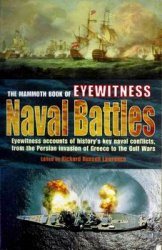At 0707 March 31 as Fire Support Unit 5 was proceeding to its station, four planes attacked. C. A.P. splashed two and New Mexico one; the third crashed Admiral Spruance’s flagship, Indianapolis. The plane’s wing struck an object on the port bulwark, twisting it so that it went overboard, but the bomb crashed through several decks and two messing and berthing compartments, killed nine men and wounded 20, and exploded in an oil bunker, damaging No. 4 shaft. Indianapolis could still steam at reduced speed and most of her guns could shoot; but the carelessness of a repair crew at Kerama Retto gave her damaged shaft the “deep six,” and she had to go to Mare Island for major repairs. She was the first heavy ship in this operation to be knocked out by a kamikaze and, as we shall see, the last to be sunk in the war. Admiral Spruance transferred his flag to New Mexico.
All that day bombardment of the beaches continued at enhanced pace, with special attention to knocking breaches in the sea wall that ran behind them. Not many were made, and few in places whence vehicles could sortie. At 0830 the UDTs, covered by close gunfire from LCI and larger vessels, completed blowing the beaches.
XXIV Corps artillery now commenced landing on Keise Shima. By sundown half the artillery and rolling stock, and an antiaircraft battery, were ashore and ready to support troop landings.
During this Holy Week that preceded the landings, an enormous amount of ammunition was expended.® There was no want of bullets; only targets were wanting, and much ammunition was wasted on cratering the fields of the Okinawa peasantry. The bombardment was completely one-sided, since the Japanese shore and mobile batteries took care not to disclose their positions by firing. Planes and gunfire between them wrecked most of the enemy aircraft on the island, which was all to the good. Apart from this, the principal re-
®In rounds, 1033 16-inch, 3285 14-inch, 567 12-inch, 3750 8-inch, 4511 6-inch and 27,266 5-inch.
Suits achieved by air bombing and naval bombardment were the destruction of villages and isolated farmhouses that had no strategic valued The operation would probably have proceeded very much as it did from L-day on if there had been no preliminary naval bombardment whatsoever. Yet a bombardment there had to be, if only to cover the demolition teams, breach the sea wall and destroy beach obstacles.
General Ushijima had left only token forces behind the Hagushi beaches and on the two airfields. He concentrated east and south of Naha, and on the Motobu Peninsula. In view of the overwhelming strength that United States forces had displayed in earlier amphibious landings, this was his best bet for prolonging the defense and indicting maximum casualties. But these tactics were unsuspected by Admiral Blandy’s force on 31 March. It seemed inconceivable that the enemy would abandon two airfields without a fight. For aught we knew, the Japanese were holed up on and behind the beaches, ready to give the boys hell when they stepped ashore. Task Force 54 took no chances and prepared to afford Admiral Turner’s amphibious force, when it landed next day, the most impressive gunfire support that any assault troops had ever had.
The writer’s personal observations behind the Hagushi beaches on 9 and 13 April.




 World History
World History









